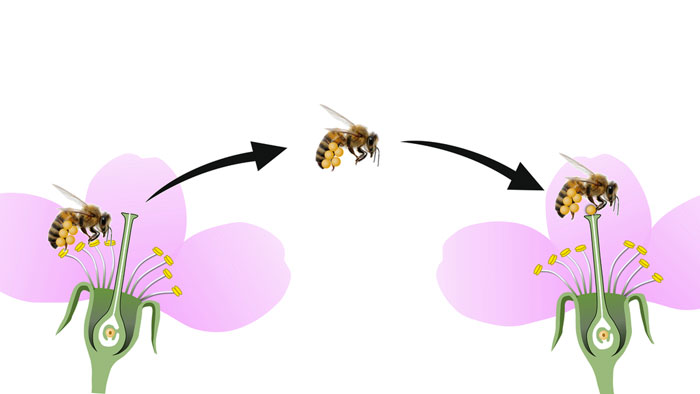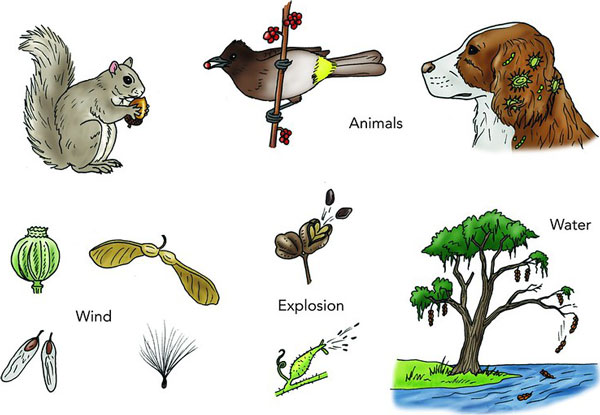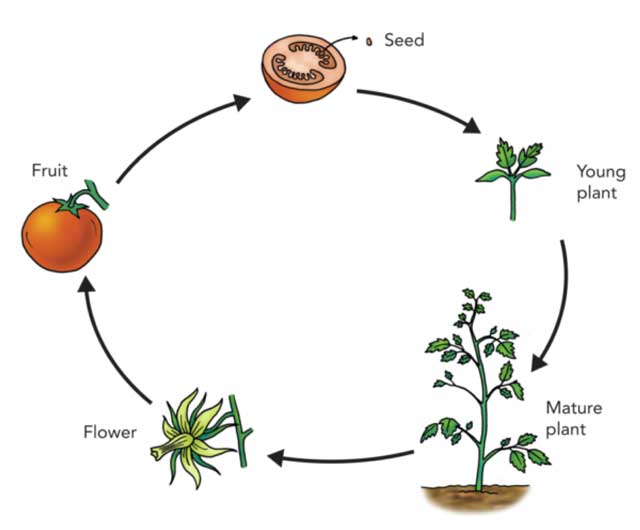 A lifecycle is a continuous process that describes how a living thing starts its life, grows to maturity, reproduces, and dies. All living things including plants have specific lifecycle which keeps their species alive. Furthermore, the lifecycle goes step-by-step – also called stages of the lifecycle – in which organisms go through a series of changes within their bodies which are also affected by environmental factors.
A lifecycle is a continuous process that describes how a living thing starts its life, grows to maturity, reproduces, and dies. All living things including plants have specific lifecycle which keeps their species alive. Furthermore, the lifecycle goes step-by-step – also called stages of the lifecycle – in which organisms go through a series of changes within their bodies which are also affected by environmental factors.
What is Plant Life Cycle?
Plants are living things, they grow and reproduce like any other living thing. They also follow a cyclic process in various stages like starting a new life, growing, and then coming back to the starting stage (reproducing). Plants start their life from seed and grow up to become mature plants.
The life cycle of plants contains various stages which follow under the two distinct phases of the Plant’s life cycle which are the haploid phase and diploid phase. These two phases of the plant lifecycle can also alternate and this process is called the alternation of generations
Alternation of Generations
The alternation of generations is the primary type of lifecycle in plants. In this lifecycle, the haploid sexual phase (gametophytes) which consists of only a single set of chromosomes turns into a diploid asexual phase (sporophytes) which contains two sets of chromosomes. Both haploid and diploid are multicellular and their cells split by meiosis and mitosis process of cell division respectively. This alternation of generation is not only common in plants but also found in algae and fungi.
Stages of Plant’s Life Cycle
Most of the plants start their life as a seed. The seed is buried in the ground by various methods where it germinates and the first leaves of the plant start to appear called seedling. After that, further growth starts and the plant reaches maturity where it pollinates and gives seeds so that its species continue to survive by starting the life cycle again. The stages of a plant’s life cycle are broken into 3, 4, and 5. But the most widely accepted is the 5 stage model.
The five stages of the Life cycle of Plants are:
- Seed
- Germination and Seedling
- Growing to Maturity
- Flowering, Pollinating, and Seeding
- Seed Dispersion
Seed – 1st Stage
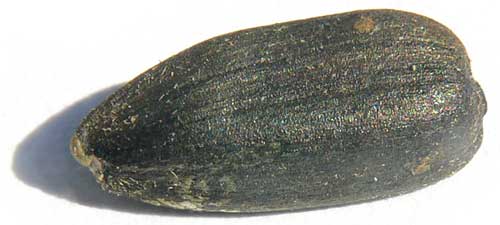
Seeds are much like babies of animals. They contain the embryo of the plants with necessary food and an outer coating for protection.
These seeds are dispersed across the land in many ways, such as moving water, wind, animals, and humans. When they fall on the rich soil with necessary things, such as water and the right temperature, they germinate and start their journey of life.
Germination and Seedling – 2nd Stage
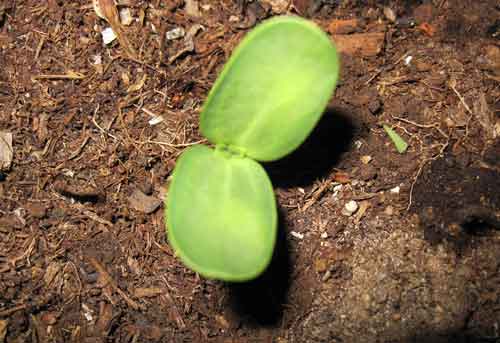
When the conditions in the soil are just right, the seed germinates. First, it breaks the outer coating and begins growing its first roots and leaves (cotyledons).
When the first sign of life from a seed appears out of the soil, it is called a seedling. As soon as the roots and leaves appear, they start their work, i.e. roots absorb water and nutrients, and leaves make food by photosynthesis. After this, the plumules develop from which new leaves emerge and grow. Plumules are the basic stems during the seedling stage.
Growing to Maturity – 3rd Stage
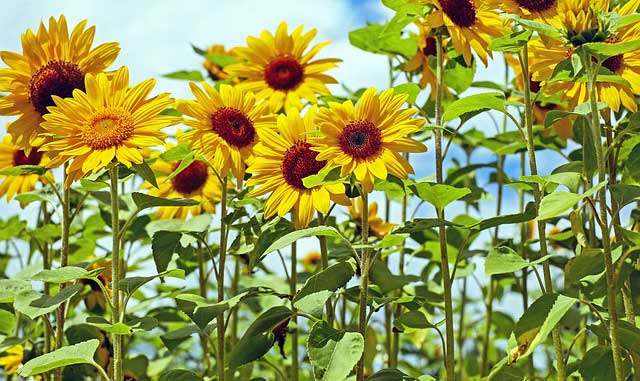
The seedling continues to grow until it reaches its full maturity. The plant needs many necessary things during its growth such as water, nutrient-rich soil, air, sunlight, the right temperature, and sufficient spacing from other plants. (For details check how plants grow?).
When plants become mature, they have to get stronger roots and an increased number of branches and leaves. At this stage, they are ready to make flowers and new seeds.
Flowering, Pollinating, and Seeding – 4th Stage
When plants become mature, they start to make flowers from modified shoots (determinate Apical Meristem). In most plants, a flower contains male and female parts; the male part is called a stamen, and the female part is called a pistil. The stamen produces the pollen (a powdery substance) which needs to reach the pistil for the production of seeds. The pollen usually spread and reaches the pistils through insects that sit on the flowers for sucking sweet fluids. When the pollen reaches the pistils, it fertilizes the cells inside it and produces seeds.
There are many plants whose male and female parts are separated by a large distance. In this case, winds and flying insects play a very important role in pollination. Winds usually carry pollen in a strong blow along with them which often reach female parts. On the other hand, Insects go from one plant to another for drinking sweet fluids. When they enter a flower, pollen get sticks to their bodies and is carried to female parts when they sit on that part of the plant.
Seed Dispersion – 5th Stage
After the production of seeds, the plants need a way to disperse these seeds to favorable places where they can germinate and start their life cycle. Most of the time, nature does the job of dispersion for the plants through winds, moving water, and animals. But there are also plants whose seeds are surrounded by fibers that help them to glide in the air when they fall apart from the plant. During their glide, they can reach very far distances and start their life away from their parent plants.
What about Seedless Plants?
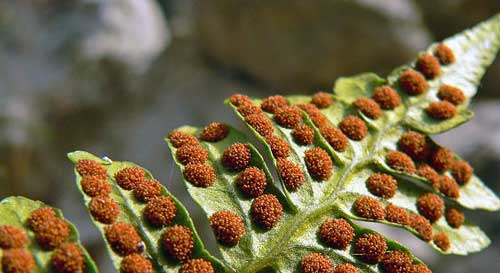
You may be thinking that all the plants are grown from seeds, but it is not true! Many plants don’t produce the flowers and seeds to reproduce. Instead, they grow from the spores of their parent plants. Spores can be parts of a plant or their remaining upon their death. New plants are produced from the spores and continue to grow.
See Non-Flowering plants for further information.
FAQs
What is Self-Pollination and Cross-Pollination?
In self-pollination, the pollen from the anther reaches the stigma in the same flower, or a different flower in the same plant. However, cross-pollination is a bit different. It happens when the pollen from the anther of one plant reaches the stigma of another plant’s flower having the same species. Both of these processes can happen naturally as well as artificially.
What is the Asexual Reproduction of Plants?
In simple, the plants which grow without fertilization are called asexually reproduced plants. Asexual reproduction can occur from fragmentation, spores, budding, and vegetative propagation. Potatoes are a famous example of the asexual reproduction of plants.
Interesting Facts
- Great Basin bristlecone pine is the longest living plant found in the world. Its age is measured to be around 5,056 years.
- Coco de Mer is the seed of a palm tree, it can weigh about 18 Kg (40 pounds) and can reach a height of 12 feet.
- Rose, Jasmine, and Lily are the strongest smelling flowers.
- When a seed is not germinating, it is in a dormant state. In this stage, it is no more than dead stuff.
